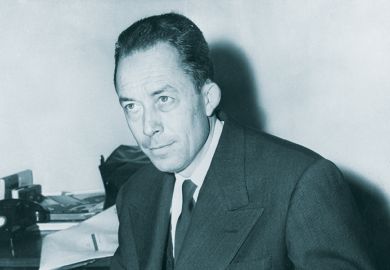Graham Stanton responded in 1994 to Carsten Thiede's redating of a manuscript of St.Matthew's gospel to the first century. It was claimed that this date guaranteed the gospel's eye-witness status, thus having far-reaching consequences for the "truth of the gospels". To examine this claim, Stanton collects some previous papers with additional chapters on the palaeographical questions.
Two chapters deal with Thiede's dating, and his further acceptance of a Dead Sea Scroll as a fragment of St Mark. These summarise the main points raised by Thiede's opponents. A further chapter on the text of the New Testament in general cannot be commended, showing poor understanding of the specialist field. In any case, Stanton's answer does not lie in the technical fields, but in his view that, whatever the palaeographical conclusions, no revolution in our evaluation of the gospels will ensue. For "gospel truth" is not literal accuracy and eyewitness record , but "portraits" of Jesus. These reflect the religious significance of Jesus, highlighted during the growth of the gospels in the first century, and accepted by the church during the next. Behind these portraits stand facts which we may deduce from statements in the gospels. The development of theology has coloured the accounts, but traits remain which are acceptable as historical data.
Stanton surveys the attempts of past generations to trace such a verifiable deposit by source criticism ("Matthew" and "Luke" derived from "Mark" and a document "Q") and form-criticism (isolating discrete stories and sayings surviving for the teaching needs of the primitive community). He does not have great confidence in these, nor in recent attempts to find more ancient material in four discoveries of the 20th century (the "Gospel of Peter", the Egerton "Unknown Gospel", the Gospel of "Thomas" in Coptic, and the "Secret Gospel of Mark").
He finds the historical substratum by a method analogous to the confirmation of literary details by archaeological discoveries. Jesus's role as wonder-working deceiver in Josephus and Talmudic tradition correlates to miracles and exorcisms; the emphasis on popular disturbance among Roman historians balances accusations levelled in the gospels; recently published Dead Sea Scrolls make likely, in Jesus's lifetime, the association of his care for the poor and sick with Messianic prophecy from Isaiah.
Even the title "Son of God" could have been ascribed to him. Similarly, beliefs and formulae known from Paul and elsewhere may be based on historical antecedents known from the gospels. Yet there is only minimal correspondence.
Stanton's presentation is somewhat repetitive, due to the book's composition from pre-existent papers. Presented, it seems, with an apologetic aim, his conclusions are so minimal that it is hard to see how the book might convince or whom it might confirm. The Jesus who emerges may have been crucified, but it is impossible to see clearly why, or how, he became an object of worship and discipleship.
Stanton has unsuccessfully attempted to combine three distinct questions: 1. The date of the Matthew papyrus; 2. The bearing of documentary date on historical reliability; 3. The kind of "truth" we may reasonably seek in the "gospel" genre. The book's bibliographies bring the instructed up to date, but will be heavy for those lacking prior knowledge.
J. N. Birdsall is emeritus professor of New Testament studies and textual criticism, University of Birmingham.
Gospel Truth?: New Light on Jesus and the Gospels
Author - Graham Stanton
ISBN - 0 00 6963 5
Publisher - HarperCollins
Price - £14.99
Pages - 215
Register to continue
Why register?
- Registration is free and only takes a moment
- Once registered, you can read 3 articles a month
- Sign up for our newsletter
Subscribe
Or subscribe for unlimited access to:
- Unlimited access to news, views, insights & reviews
- Digital editions
- Digital access to THE’s university and college rankings analysis
Already registered or a current subscriber? Login



